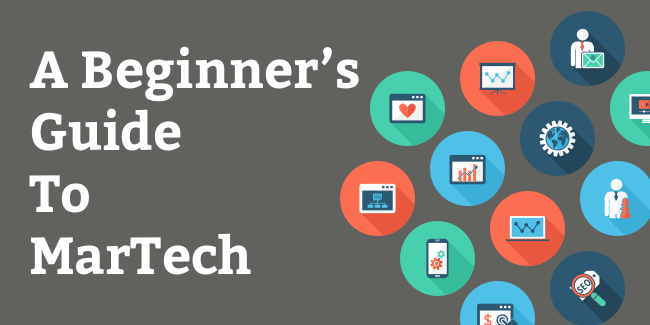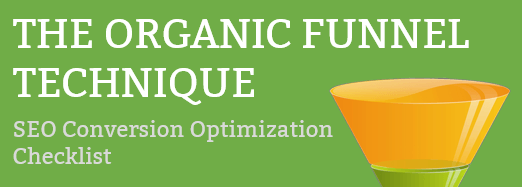
Let me Google “Digital Marketing” for you.
Since the dawn of the personal computer marketing has changed dramatically. What was once the industry of Mad Men has become the playground of the David Lightman’s of the world. Digital Marketing and MarTech (Marketing Technology) are a complex web of things. And they continue to grow in complexity. Just check out the difference between service providers in 2014 and 2016!
With so much stuff in this space, how is a company that wants to grow supposed to figure out what to do?
Our goal at Click Laboratory is to take the guess work out of your marketing. That makes us your marketing Sherpa.
Before we dive into specific topics in marketing – building websites, understanding website analytics, SEO, SEM, and PPC – we need to take a care of a few things first. Let’s start by answering the obvious question: What is Digital Marketing & MarTech?
Great questions!
Digital Marketing
According the paragon of all information on the web, Wikipedia, digital marketing is using digital technologies. Well, that clarifies things. Hubspot, one of the largest providers of digital marketing technology doesn’t help much either. Their definition is marketing online.
To be fair, if you read through the articles, you will get a better understanding of what that actually means. So allow us to clarify the definition in as simple way as we can.
Digital marketing is the process of promoting and advertising products or services using online channels, such as search engines, social media platforms, email, websites, and mobile apps, to reach and engage with potential customers. It encompasses various strategies and tactics aimed at driving awareness, generating leads, and increasing sales in the digital space.
Digital marketing is simply marketing.
Because the majority of marketing that occurs these days is online, creating a distinction between digital and traditional marketing is missing the point. And potentially dividing your attention. Having a single view on marketing makes understanding how to win for your business so much simpler.
MarTech
Now that we have that out of the way, let’s tackle a far greater mystery. What is MarTech?
Martech, short for marketing technology, refers to the tools, software, and platforms used by marketers to plan, execute, analyze, and optimize marketing campaigns and strategies across various digital channels. Martech enables businesses to automate processes, collect and analyze data, personalize content, and enhance customer experiences, ultimately improving the efficiency and effectiveness of their marketing efforts.
So let’s start with a simple explanation: MarTech is the technology – hardware, software, platforms, and services, that are used to market today.
You are most likely familiar with some these platforms: Facebook, Google, and Twitter. You may even be familiar with others, like MailChimp, HubSpot, Constant Contact, or even Marketo; but chances are there are quite of few of the more than 3500 products and services that Scott Brinker of ChiefMarTec.com tracks annually.
And since the list has grown from 150 to over 11,00+ since 2011, it can be difficult for anyone to keep up with the growth of this technology.
Therefore, the best way we can explain MarTech is to describe how it is used. MarTech is the tools and services that a business uses to market. The combination of all of those tools can be thought of as a stack of interconnected tools and services that share and link information between them. You can just call it your Marketing Stack.
Understanding what Digital Marketing and MarTech is is only the first step. Understanding that doing digital marketing and using MarTech is not a strategy, in and of itself, is vastly more important.
How Do You Begin Your Martech Journey?
Marketing technology, or martech, has become an essential part of any modern marketing strategy. With so many tools and platforms available, it can be overwhelming to choose the right ones for your business. In this blog post, we will explore the steps outlined in HubSpot’s “How to Build a Marketing Stack” article and provide some additional insights and tips for creating a successful martech stack.
Step 1: Define Your Goals
Before you start building your martech stack, you need to define your marketing goals. What are you trying to achieve? Do you want to generate leads, increase website traffic, or improve customer retention? Your goals will dictate the types of tools and platforms you need.
Defining martech goals is an essential first step for any company looking to build a successful marketing technology (martech) stack. Martech goals should be specific, measurable, achievable, relevant, and time-bound (SMART). Here are some tips to help companies define their martech goals:
- Start with your business goals. Your martech goals should align with your overall business goals. For example, if your business goal is to increase revenue, your martech goal might be to generate more leads or improve conversion rates.
- Consider your target audience. Your martech goals should also consider your target audience. Who are you trying to reach, and what do they need from your business? Your martech stack should help you deliver relevant and timely messages to your target audience.
- Identify specific KPIs. Martech goals should be measurable, so it’s essential to identify specific key performance indicators (KPIs) that you want to track. For example, if your martech goal is to generate more leads, your KPIs might include the number of website visitors, the conversion rate, and the number of leads generated.
- Prioritize your goals. It’s essential to prioritize your martech goals based on their importance and impact on your business. Start with the goals that will have the most significant impact on your business, and then work your way down the list.
- Set realistic timelines. Your martech goals should be achievable within a realistic timeframe. Consider factors like budget, resources, and the complexity of your martech stack when setting timelines.
- Continuously review and refine. Finally, it’s essential to continuously review and refine your martech goals. As your business evolves, your martech goals may need to be adjusted to ensure that they align with your overall strategy.
It’s important to note that your goals may change over time, so you should revisit this step periodically to ensure your martech stack is aligned with your current objectives.
Step 2: Identify Your Core Platforms
Once you have defined your goals, you can start identifying the core platforms you need to achieve them. HubSpot recommends starting with a customer relationship management (CRM) platform, a marketing automation platform, and a content management system (CMS).
While these are important platforms, it’s worth considering other tools that may be relevant to your specific goals. For example, if you’re focused on social media marketing, you may want to include a social media management platform in your martech stack.
Step 3: Evaluate Additional Tools
After you have identified your core platforms, you can start evaluating additional tools to add to your martech stack. HubSpot suggests looking for tools that integrate with your core platforms and meet your specific needs.
It’s important to avoid adding tools just for the sake of having them. Every tool you add to your martech stack should serve a specific purpose and help you achieve your marketing goals.
Step 4: Implement and Integrate
Once you have selected your tools, it’s time to implement and integrate them. This can be a complex process, especially if you are dealing with multiple platforms and tools.
It’s essential to ensure that your tools are properly integrated and can communicate with each other. This will help you avoid data silos and ensure that you have a complete view of your marketing efforts.
Step 5: Monitor and Optimize
Finally, it’s crucial to monitor and optimize your martech stack regularly. This means tracking your key performance indicators (KPIs) and using data to make informed decisions about your marketing strategy.
As you monitor your martech stack, you may find that certain tools are not providing the results you need. Don’t be afraid to remove or replace them with more effective alternatives.
Building a successful martech stack requires careful planning and evaluation. By defining your goals, identifying core platforms, evaluating additional tools, implementing and integrating, and monitoring and optimizing, you can create a martech stack that helps you achieve your marketing objectives. Remember to regularly revisit and refine your martech stack to ensure that it stays aligned with your evolving business needs.
Have questions about how you can use digital marketing to achieve your goals or need help understanding your Marketing Stack? Give us a call.

